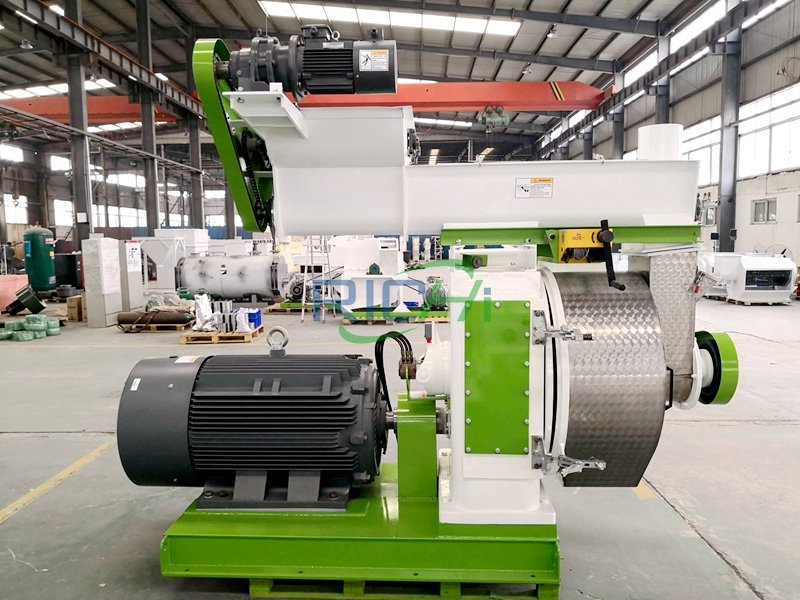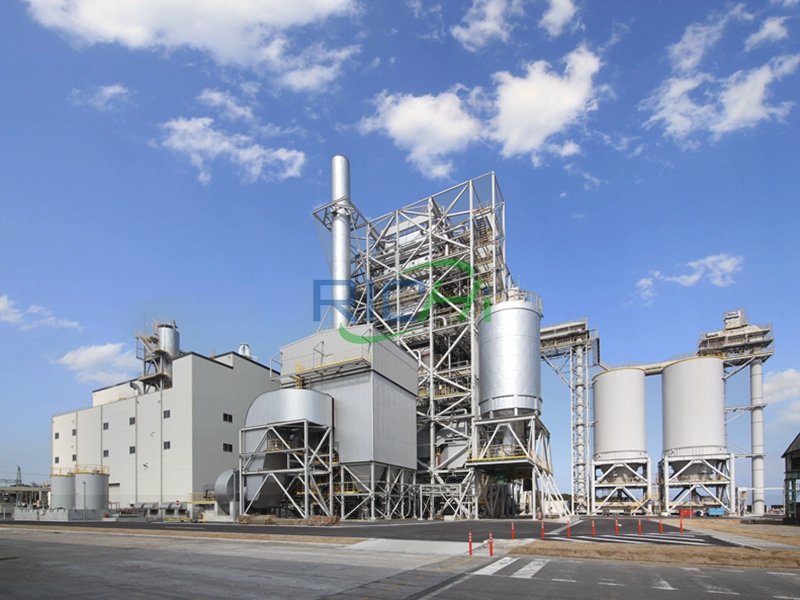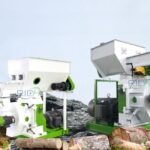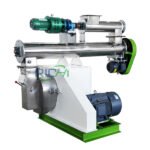Introduction
Wood pellets have emerged as a crucial component in the quest for sustainable energy solutions. As a renewable resource, wood pellets offer an environmentally friendly alternative to fossil fuels, contributing significantly to carbon neutrality and energy security. This article will explore the comprehensive process of wood pellet production, the necessary equipment for a complete wood pellet plant, and the critical considerations in selecting a commercial wood pellet maker. Additionally, we will discuss the advantages of RICHI wood pellet equipment, the benefits of wood pellets, and the various uses of wood chips. Furthermore, we will delve into the raw materials used in wood pellet production, the steps involved in building a complete wood pellet plant, the costs associated with such a plant, and the factors influencing the location of wood pellet plants.
How Are Wood Pellets Produced?
The production of wood pellets is a meticulous process that transforms raw wood materials into dense, uniform pellets ideal for burning as fuel. The process begins with the collection of raw materials, which typically include wood chips, sawdust, and forestry residues. These materials are first chipped and then ground into a fine powder using a hammer mill. The grinding process is essential as it ensures uniform particle size, which is crucial for producing high-quality pellets.
Once the raw material is adequately ground, it undergoes drying to reduce moisture content to an optimal level, usually below 10%. The drying process is critical because excessive moisture can negatively impact pellet quality and combustion efficiency. The dried material is then fed into a pellet mill, where it is compressed through a die to form cylindrical pellets. The high pressure and temperature generated during this process cause the lignin in the wood to melt, binding the particles together without the need for additional binders.
After pelletization, the pellets are cooled to harden and stabilize their structure. Cooling also helps reduce the moisture content further, enhancing the pellets’ durability and storage life. Finally, the pellets are screened to remove any fines or broken pellets before being packaged for distribution.
What Equipment Does a Complete Wood Pellet Plant Need to Purchase?
A complete wood pellet plant requires several key pieces of equipment to ensure efficient and continuous production. The primary equipment includes:
- Wood Chipper: Used to reduce large pieces of wood into smaller, manageable sizes.
- Hammer Mill: Grinds the wood chips into a fine powder suitable for pelletization.
- Dryer: Reduces the moisture content of the raw material to the required level.
- Pellet Mill: The heart of the production line, where the ground material is compressed into pellets.
- Cooler: Cools the pellets post-pelletization to solidify their structure.
- Packaging Machine: Packages the finished pellets for distribution and sale.
Optional equipment includes sieves for separating fines from the pellets, conveyors for material handling, and storage solutions to manage raw materials and finished products.
Each piece of equipment plays a vital role in the production process, ensuring the efficiency and quality of the final product. Investing in high-quality machinery is crucial for maintaining consistent production levels and minimizing downtime.
How to Choose a Commercial Wood Pellet Maker?

Choosing the right commercial wood pellet maker is a critical decision that can significantly impact production efficiency and profitability. When selecting a pellet maker, consider the following factors:
- Production Capacity: Ensure the pellet maker can meet your required production output. Consider both current and future production needs to avoid outgrowing the equipment too quickly.
- Energy Efficiency: Opt for machines that consume less energy, as this will reduce operating costs and improve overall profitability.
- Durability and Reliability: Look for equipment made from high-quality materials with a reputation for reliability. Durable machines will require less frequent maintenance, reducing downtime and repair costs.
- Ease of Maintenance: Machines that are easy to maintain will minimize downtime and reduce the need for specialized technicians.
- Type of Pellet Mill: Consider whether a flat die or ring die pellet mill is more suitable for your needs. Ring die mills are generally more efficient and better suited for large-scale production, while flat die mills are ideal for smaller operations.
Cost-effectiveness is another important consideration. While initial costs may be higher for advanced machines, their long-term benefits in terms of efficiency, durability, and lower operating costs often justify the investment.
What Are the Advantages of RICHI Wood Pellet Equipment?
RICHI is a well-established name in the wood pellet industry, known for its advanced technology and high-quality equipment. The advantages of RICHI wood pellet equipment include:
- Advanced Technology: RICHI uses state-of-the-art technology to design pellet mills that are highly efficient and reliable. Their machines are equipped with the latest features to optimize production and ensure consistent pellet quality.
- High Efficiency: RICHI equipment is designed to maximize output while minimizing energy consumption. This not only reduces operating costs but also enhances the overall profitability of the production process.
- Durability: RICHI machines are built to last, with high-quality materials and robust construction that can withstand the rigors of continuous production.
- Comprehensive After-Sales Support: RICHI offers excellent after-sales support, including maintenance services, spare parts supply, and technical assistance, ensuring that your equipment remains in optimal condition.
Customer testimonials and case studies further highlight the effectiveness and reliability of RICHI equipment, making it a preferred choice for many wood pellet producers.
What Are the Benefits of Wood Pellets?
Wood pellets offer numerous environmental and economic benefits, making them an attractive alternative to traditional fossil fuels. Some key benefits include:
- Renewable Energy Source: Wood pellets are made from renewable resources, such as forestry residues and wood waste, making them a sustainable energy option.
- Carbon Neutrality: Burning wood pellets releases carbon dioxide, but this is offset by the carbon absorbed by the trees during their growth. This makes wood pellets a carbon-neutral energy source.
- Cost Savings: Wood pellets are often more cost-effective than fossil fuels, especially in regions where wood is abundant. Additionally, the price of wood pellets tends to be more stable than that of oil or gas.
- Sustainability: The production and use of wood pellets contribute to sustainable forest management practices by providing a market for wood waste and residues that would otherwise go unused.
- Efficient Combustion: Wood pellets have a high energy density and low moisture content, resulting in efficient combustion and less ash production compared to other biomass fuels.
Overall, wood pellets offer a compelling combination of environmental benefits and economic advantages, making them a viable energy solution for both residential and industrial use.
What Can Wood Chips Be Used For?
Wood chips are versatile and have numerous applications beyond pellet production. Some common uses include:
- Landscaping and Mulch Production: Wood chips are often used in landscaping as mulch to retain soil moisture, suppress weeds, and improve soil structure.
- Biomass Energy Production: Wood chips can be used as a direct fuel source in biomass power plants, providing a renewable energy option for electricity generation.
- Pulp and Paper Industry: Wood chips are a primary raw material in the production of pulp for paper manufacturing.
- Animal Bedding: Wood chips are used as bedding material in livestock farms due to their absorbent properties and ability to provide a comfortable resting environment for animals.
- Composting: Wood chips can be mixed with other organic materials to create compost, which enriches soil and supports plant growth.
The use of wood chips in these applications not only maximizes resource utilization but also contributes to environmental sustainability by reducing waste.
What Is the Raw Material of Wood Pellets?
The raw materials used in wood pellet production are primarily derived from wood and forestry residues. Common raw materials include:
- Softwood and Hardwood: Both softwood (e.g., pine, spruce) and hardwood (e.g., oak, maple) are commonly used in pellet production. Each type of wood has its characteristics, with hardwood typically producing denser pellets with higher energy content.
- Sawdust: A byproduct of sawmilling, sawdust is an ideal raw material for pellet production due to its fine particle size and consistent quality.
- Forestry Residues: Branches, bark, and other residues from logging operations can be used as raw materials for pellet production, contributing to the efficient use of forest resources.
- Wood Shavings: Similar to sawdust, wood shavings are often used in pellet production, especially when sourced from woodworking operations.
The quality of the raw material is crucial for producing high-quality pellets. Factors such as moisture content, particle size, and the presence of contaminants can significantly impact the final product’s quality and performance.
How to Build a Complete Wood Pellet Plant?
Building a complete wood pellet plant requires careful planning and execution. The following steps outline the process:
- Site Selection: Choose a location with easy access to raw materials, transportation infrastructure, and energy sources. The site should also comply with environmental and zoning regulations.
- Plant Design and Layout: Design the plant layout to optimize material flow and ensure efficient production. Consider factors such as equipment placement, storage areas, and safety measures.
- Equipment Procurement: Purchase the necessary equipment, including wood chippers, hammer mills, dryers, pellet mills, coolers, and packaging machines. Ensure that the equipment is compatible with your production requirements.
- Construction and Installation: Construct the plant infrastructure, including buildings, utilities, and support structures. Install the equipment and ensure it is properly integrated into the production line.
- Regulatory Compliance: Obtain the necessary permits and approvals from local authorities. Ensure that the plant meets all environmental, safety, and operational regulations.
- Commissioning and Testing: Once the plant is constructed, conduct commissioning and testing to ensure that all equipment functions correctly and the production process is efficient.
- Operational Start-Up: Begin full-scale production and monitor the plant’s performance. Make any necessary adjustments to optimize production and address any issues that arise.
Building a complete wood pellet plant is a significant investment, but with proper planning and execution, it can be a highly profitable venture.
What Are the Costs of a Complete Wood Pellet Plant?
The costs of setting up a complete wood pellet plant can vary widely depending on factors such as plant size, equipment quality, and location. The main costs to consider include:
- Capital Expenditure (CAPEX): This includes the cost of purchasing equipment, constructing infrastructure, and other initial investments. CAPEX can range from several hundred thousand to several million dollars, depending on the plant’s scale and complexity.
- Operating Expenses (OPEX): Ongoing costs such as raw material procurement, energy consumption, labor, maintenance, and transportation. These costs will vary depending on production volume and efficiency.
- Financial Planning: It’s essential to conduct a thorough financial analysis, including a break-even analysis and ROI projection, to ensure the plant’s profitability.
- Funding Options: Explore potential funding sources, such as loans, grants, or investor capital, to support the initial investment.
Understanding the costs involved in setting up and operating a wood pellet plant is crucial for making informed business decisions and ensuring the project’s long-term success.
Where Is the Wood Pellet Plant Generally Located?
The location of a wood pellet plant is a critical factor that can influence production costs, logistical efficiency, and overall profitability. Key factors to consider when choosing a location include:
- Proximity to Raw Materials: A plant located near abundant wood resources will reduce transportation costs and ensure a steady supply of raw materials.
- Transportation Infrastructure: Access to roads, railways, and ports is essential for the efficient transportation of raw materials to the plant and finished products to markets.
- Market Proximity: Being close to the primary market for wood pellets can reduce distribution costs and improve delivery times.
- Environmental and Regulatory Considerations: Choose a location that complies with environmental regulations and is unlikely to face opposition from local communities.
Common locations for wood pellet plants include regions with abundant forestry resources, such as Canada, the United States, and Northern Europe. These areas offer the necessary infrastructure and market access to support large-scale pellet production.
Conclusion
Wood pellet production is a complex and multifaceted industry that requires careful planning, high-quality equipment, and strategic decision-making. From understanding the production process and selecting the right equipment to building a complete plant and managing costs, each step is critical to ensuring success in this growing industry. With the environmental and economic benefits that wood pellets offer, investing in this sustainable energy source is not only a smart business decision but also a contribution to a greener future.


